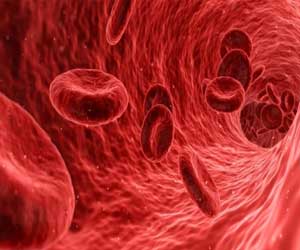- Home
- Editorial
- News
- Practice Guidelines
- Anesthesiology Guidelines
- Cancer Guidelines
- Cardiac Sciences Guidelines
- Critical Care Guidelines
- Dentistry Guidelines
- Dermatology Guidelines
- Diabetes and Endo Guidelines
- Diagnostics Guidelines
- ENT Guidelines
- Featured Practice Guidelines
- Gastroenterology Guidelines
- Geriatrics Guidelines
- Medicine Guidelines
- Nephrology Guidelines
- Neurosciences Guidelines
- Obs and Gynae Guidelines
- Ophthalmology Guidelines
- Orthopaedics Guidelines
- Paediatrics Guidelines
- Psychiatry Guidelines
- Pulmonology Guidelines
- Radiology Guidelines
- Surgery Guidelines
- Urology Guidelines
New drug found for treatment of acute porphyria

A new collaborative clinical trial by researchers, at Karolinska Institute, Sweden, has pointed out that a new drug candidate "Givosiran" shows efficacy in treating acute porphyria. The study was published in the New England Journal of Medicine.
Currently, liver transplantation is the only effective treatment for this disease, which is not only expensive but a plethora of risks are associated with it. The drug candidate has been given PRIME and Breakthrough Designation by the European Medicines Agency and the U.S. Food and Drug Administration, which is speeding up the review process which could mean that the drug may be available by early 2020.
Porphyria is caused by deficiencies in the heme producing pathway. Such deficiency may occur due to inborn metabolic disorders or exposure to infectious agents or environmental toxins. As heme is also necessary for the metabolism of certain drugs and hormones in the liver, defect in heme synthesis is life-threatening. Acute porphyria can cause potentially life-threatening attacks of abdominal pain, nausea, vomiting and paralysis. Acute intermittent porphyria (AIP) is the most common form of acute porphyria. Patients suffering from acute attacks are treated using an infusion containing a form of heme called hemin, which suppresses the formation of the toxic metabolites.
"Hemin has saved the lives of many patients and will continue to be important, but it's only for acute treatment," says the study's lead author Eliane Sardh, a researcher at the Department of Molecular Medicine and Surgery, Karolinska Institutet, and consultant at Karolinska University Hospital. "For patients with recurrent attacks, no other curative treatment is available than liver transplantation."
However, the new drug candidate givosiran, developed by Alnylam Pharmaceuticals, has shown promising results in a clinical phase I study in 40 patients. The study has been conducted in close, long-standing collaboration with Porphyria Centre Sweden, which has also provided the majority of the patients.
The administration of givosiran reduced the number of acute attacks in the patients by up to 79 per cent, and the need for hemin decreased by up to 83 per cent. Most of the reported side effects were mild or moderate, and no clear link was observed between adverse reactions and dose. Severe adverse reactions were reported in six patients, including one death that was deemed unrelated to givosiran.
The drug candidate is based on a natural method of inhibiting gene expression called RNA interference (RNAi).
"Givosiran down-regulates ALAS1, the key regulator of the hepatic heme synthesis pathway, which reduces the toxic metabolites without the use of hemin," says Dr Sardh. "It also has a lasting effect of at least one month, which gives us an effective means of preventing acute attacks in seriously afflicted porphyria patients who have limited treatment options."
To read more about this article please click on the link
https://www.nejm.org/doi/10.1056/NEJMoa1807838

Disclaimer: This site is primarily intended for healthcare professionals. Any content/information on this website does not replace the advice of medical and/or health professionals and should not be construed as medical/diagnostic advice/endorsement or prescription. Use of this site is subject to our terms of use, privacy policy, advertisement policy. © 2020 Minerva Medical Treatment Pvt Ltd